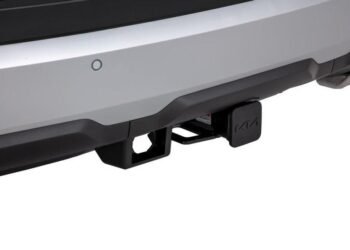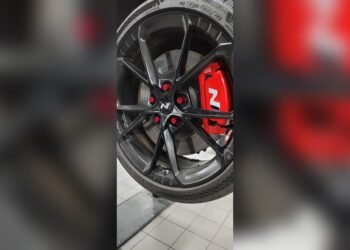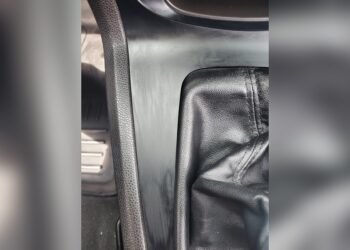If you’re looking to remove hood insulation clips, you’ve probably noticed they can be tricky to handle without the right approach. Whether you want to replace worn-out insulation, repair your hood, or simply clean up under the hood, knowing how to safely and effectively remove these clips is key.
You don’t want to damage your hood liner or struggle with stubborn clips that seem stuck. In this guide, you’ll discover simple steps and handy tips to remove your hood insulation clips quickly and without hassle. Keep reading to learn exactly what tools you need and how to get the job done right—your car will thank you for it!
Tools Needed
Removing hood insulation clips requires the right tools for a smooth process. Using proper tools prevents damage to the insulation and clips. It also saves time and effort. Below are the essential tools needed to remove hood insulation clips safely and efficiently.
Basic Hand Tools
Start with simple hand tools found in most toolkits. A flathead screwdriver helps pry clips gently. Needle-nose pliers grip and pull clips without breaking them. A trim removal tool can assist in loosening clips carefully. A flashlight helps to see clips clearly under the hood. These tools cover most removal tasks for hood insulation clips.
Specialty Clip Removal Tools
Specialty tools make clip removal easier and safer. A clip removal plier is designed to pull clips without damage. These pliers fit around clips and release them with minimal force. A panel clip remover tool is ideal for stubborn clips. It slides under the clip head and lifts it out cleanly. These tools reduce the risk of breaking clips or damaging the hood liner.
Types Of Hood Insulation Clips
Hood insulation clips hold the insulation pad firmly under the vehicle’s hood. These clips come in different types depending on the car model and insulation design. Knowing the types helps in removing or replacing them correctly. The right clip ensures the insulation stays secure and protects the engine bay well.
Plastic Push Pins
Plastic push pins are common and easy to spot. They have a round head and a stem that pushes into holes on the hood. These pins expand inside the hole to hold the insulation tightly. They are simple to remove by pulling the head gently with a trim removal tool or pliers.
Metal Retainer Clips
Metal retainer clips are strong and durable. They usually have a flat or curved shape that grips the insulation pad and hood firmly. These clips often require a flathead screwdriver or pliers to pry them loose. They resist heat better than plastic pins and last longer in harsh conditions.
Spring Clips
Spring clips use tension to hold the insulation in place. They have flexible metal arms that snap into slots on the hood. These clips are reusable and easy to handle. You can squeeze the arms to release the clip when removing the insulation. Spring clips provide a secure fit without damaging the insulation.
Preparing The Hood
Preparing the hood is the first step in removing hood insulation clips. It makes the entire process safer and easier. Proper preparation helps avoid damage to the hood or clips. Clean and clear access ensures smooth removal and reinstallation.
Taking time to prepare protects your vehicle and saves effort later. Let’s explore how to get your hood ready.
Opening And Securing The Hood
Start by fully opening the hood. Use the hood release lever inside the vehicle. Lift the hood carefully and prop it open with the support rod. If your car has hood struts, make sure they hold the hood firmly in place. A stable hood prevents accidents and allows both hands to work freely.
Do not force the hood or use objects to keep it open. Always use the proper support to avoid injury or damage.
Cleaning The Clip Area
Before removing clips, clean the area around them. Use a soft brush or cloth to remove dirt and debris. This prevents particles from falling into the engine bay. Clean surfaces help clips release easily without breaking. Avoid harsh chemicals that may damage insulation or paint.
Cleaning also lets you inspect clips for rust or wear. Replace any damaged clips to ensure secure reattachment after removal.
Removing Plastic Push Pins
Removing plastic push pins is a key step in taking off hood insulation clips. These pins hold the insulation pad tightly against the hood. Proper removal prevents damage to the pins or the hood liner. Take your time and use the right tools for a smooth process.
Using A Flathead Screwdriver
Start by locating the center of the plastic push pin. Insert a flathead screwdriver gently under the pin’s edge. Twist the screwdriver slowly to lift the pin’s head. Do not force it hard to avoid breaking the pin. Once the head lifts, pull the pin out carefully with your fingers or pliers.
Levering Clips Safely
Use the flathead screwdriver as a lever to ease the clips out. Place the screwdriver tip under the clip base, not too deep. Push the handle down slowly to lift the clip. Work around the clip evenly to avoid bending or cracking it. Keep the clips intact for reuse after removal.
Removing Metal Retainer Clips
Removing metal retainer clips is an important step when taking off hood insulation. These clips hold the insulation firmly in place. Removing them carefully ensures you can reuse the clips or avoid damage to your car’s hood. Using the right tools and techniques makes the job easier and safer.
Using Pliers
Pliers are a common tool for removing metal retainer clips. Grip the clip gently but firmly near its base. Slowly twist or pull the clip straight out without bending it. Needle-nose pliers work well for tight spaces. Avoid using too much force to prevent breaking the clip. Take your time to loosen the clip step by step.
Avoiding Damage To Clips And Hood
Protecting both the clips and hood is essential. Use a flat tool, like a plastic trim remover, to pry under the clip’s edge. This prevents scratching or denting the hood’s surface. Work slowly and evenly around the clip. Keep the clips straight to avoid bending or breaking them. Store removed clips safely for reinstallation later.

Credit: www.youtube.com
Removing Spring Clips
Removing spring clips is a key step in taking off hood insulation safely. These clips hold the insulation firmly in place. Knowing how to remove them without damage saves time and effort. Spring clips come in various shapes but work on the same principle. They use tension to stay locked and require careful handling to release.
Pinching Techniques
Pinching the spring clips correctly helps unlock them. Use your thumb and forefinger to grasp the clip’s edges. Squeeze gently but firmly to reduce the clip’s grip. This action loosens the clip from its mounting hole. Avoid squeezing too hard to prevent breaking the clip. Some clips need you to pinch the center, while others require pinching the sides. Test gently to find the right spot for pinching.
Clip Release Methods
After pinching, pull the clip straight out carefully. Use a flat-head screwdriver if your fingers cannot reach. Insert the screwdriver under the clip’s edge and pry it up slowly. This lifts the clip away from the hood’s surface. Work around the clip evenly to avoid bending or snapping it. Keep the clips in a safe place for reuse. Releasing spring clips without forcing them helps protect both clips and insulation.
Handling Stubborn Clips
Removing hood insulation clips can be tricky, especially when clips resist easy removal. Stubborn clips may be stuck due to rust, dirt, or tight fitting. Careful handling is necessary to avoid damage to the hood or insulation. Using the right techniques can make the process smoother and safer.
This section covers two effective methods to handle stubborn clips: applying lubricants and gentle heat application. Both methods help loosen clips without causing harm.
Applying Lubricants
Lubricants reduce friction and help release clips stuck in place. Use a spray lubricant designed for automotive parts. Spray the lubricant directly on the clip and around its base. Let it sit for a few minutes to penetrate and loosen rust or dirt. Then, gently pry the clip with a plastic trim tool or flat screwdriver. Avoid using too much force to prevent breaking the clip or damaging the hood insulation.
Gentle Heat Application
Applying gentle heat can expand metal clips slightly, easing removal. Use a heat gun or a hairdryer on low heat. Hold the heat source a few inches away from the clip. Move it slowly around the clip for about 1-2 minutes. Avoid overheating, which can damage insulation or paint. After heating, try to remove the clip carefully using a trim tool. The heat softens any adhesive or rust, making clips easier to pull out.
Credit: www.siennachat.com
Removing Hood Insulation Pad
Removing the hood insulation pad is a simple task that helps in maintenance or repair work under the hood. The insulation pad protects the hood from heat and reduces engine noise. Proper removal avoids damage to the pad and clips, ensuring easy reinstallation.
Detaching From Clips
Start by locating the insulation clips holding the pad. Gently pry each clip using a flat tool or your fingers. Avoid pulling too hard to prevent breaking the clips or tearing the insulation. Work slowly around the hood until all clips are free. Keep the clips in a safe place for reuse.
Inspecting For Damage
After removing the pad, check it carefully for tears, burns, or stains. Also, inspect the clips for cracks or bending. Damaged insulation may need replacement to maintain heat and noise protection. Replace broken clips to secure the pad firmly when reinstalling. A good inspection saves trouble later.
Replacing Clips And Insulation
Replacing clips and insulation on your vehicle’s hood is important for maintaining sound and heat protection. Over time, clips can break or wear out. The insulation pad may also become damaged or loose. Proper replacement keeps your engine quiet and protects the hood’s paint from heat damage.
Using the right replacement clips ensures a secure fit. Reinstalling the insulation pad properly restores its full function. These simple steps help extend the life of your hood insulation system.
Choosing Replacement Clips
Select clips that match your vehicle’s make and model. Look for durable plastic or metal clips designed for hood insulation. Avoid cheap clips that can break easily. Check the size and shape to ensure they fit the holes in your hood and insulation pad. Quality clips hold the insulation firmly and prevent rattling or falling off.
Reinstalling Insulation Pad
Place the insulation pad back onto the hood carefully. Align it with the holes for the clips. Press the clips through the insulation and into the hood holes. Push firmly until the clips snap into place. Make sure the insulation lies flat without wrinkles or gaps. A well-secured pad provides better noise reduction and heat protection.
Credit: www.ramforumz.com
Maintaining Hood Insulation
Maintaining hood insulation is important for your vehicle’s performance and appearance. Hood insulation protects the paint from engine heat and reduces noise inside the cabin. Keeping it in good condition extends its life and effectiveness. Regular care prevents damage and costly repairs.
Regular Inspection Tips
Check hood insulation for tears, cracks, or missing clips. Inspect clips to ensure they hold the insulation firmly in place. Look for signs of moisture or dirt buildup that can cause damage. Perform these checks every few months or during routine car maintenance. Early detection helps avoid bigger problems later.
Cleaning And Care
Clean hood insulation gently with a soft brush or cloth to remove dust and debris. Avoid harsh chemicals that can degrade the material. Use mild soap and water if needed, then let it dry completely before closing the hood. Keep clips clean and replace any that are broken or missing. Proper cleaning supports insulation performance and durability.
Frequently Asked Questions
Can You Drive Without Hood Insulation?
Yes, you can drive without hood insulation. It mainly reduces engine noise, protects paint from heat, and offers some fire safety. Absence may increase noise and risk of paint damage but won’t harm engine function directly.
Is Engine Hood Insulation Necessary?
Engine hood insulation reduces noise, protects paint from heat, and offers fire suppression. It’s not essential but improves comfort and safety.
What Is The Padding Under The Hood Called?
The padding under the hood is called hood insulation or hood liner. It reduces engine noise, manages heat, and protects paint.
How Much Does It Cost To Replace Hood Insulation?
Replacing hood insulation typically costs between $50 and $150, depending on material and labor fees. DIY installation reduces expenses.
How Do I Safely Remove Hood Insulation Clips?
Use a flathead screwdriver or clip removal tool to gently pry clips without damage.
Conclusion
Removing hood insulation clips is a simple task with the right tools. Take your time to avoid damaging the clips or hood liner. Proper removal helps maintain your vehicle’s appearance and function. Always handle clips gently to reuse them if needed.
Keeping the hood insulation intact protects your car from heat and noise. Regular checks can prevent unexpected wear or damage. This small maintenance step saves money and effort in the long run. Try these tips for a smooth, safe clip removal experience.

















